Earlier in our trip we visited Grand Coulee Dam. Today we headed out toward Boulder City to visit Hoover Dam.
Comparison to the two dams is hard to avoid. Though both were started during the Great Depression, Hoover was completed in 1936 and Grand Coulee in 1942. Work on Hoover was begun in 1931 and work on Grand Coulee followed two years later. Both are concrete gravity dams. Hoover is a tall arch and Grand Coulee is straight and wide. Hoover is 726 feet in height while Grand Coulee is 550 feet. Grand Coulee is four times the width of Hoover Dam. Because of its size (volume of concrete), Grand Coulee took longer to build. Now for one more fact in the form of a question. Which holds the largest volume of water (reservoir)? It is Grand Coulee Dam. One reason is that the Columbia River, which is dams, is much wider than the Colorado River at Black Canyon. By the way, the dam sits on the border between Nevada and Arizona with the visitor center being on the Nevada side.
OK. Enough with those facts. It’s time to display the photos.
Our first view of Lake Meade (in the distance) was from the
interstate as the roadway led down to 400 feet above the
highest point of the dam.
Early in the tour we were told how the dam was built with
coffer dams created on the upper and lower areas. Two channels
were created to direct the flow of the river around the construction
site until the time came to start filling the man-made lake and
putting the dam into electrical production and flood control.
Through these large tubes flows the water that is fed into the
swirling rotors of the electrical generators.
This is a new of one of the galleries where the turbines
are placed. One of the electrical generators was being
serviced when we were present (replacing some stators).
Our guide told us a bunch of dam stories and jokes. The curved
hallway in which we were standing is for tourists. One above
us is used for workers. Neither the two meet.
Connecting tunnels exist that lead to several vents on the
lower side of the dam. The vents help in air flow which is
important for the internal guts of such a large structure of concrete.
This vent was about 90 feet from the top of the dam.
This view is what can be seen through the vents; a long way
to the bottom and the service platforms.
This is the interior of one of the original passageways built
to allow the flow of water around the construction area.
The floor is not flat so walking was more like waddling.
This photo shows how dramatically low level of Lake Mead.
Today it is still about 165 feet below normal pool level as
evidenced by the line in the rocky walls.
A model of how the dam was built. Once pouring of concrete
was begun in its various sections, only two holidays
were observed per year; Independence Day and Christmas.
Speculation is that such a project could not be completed
today under current labor and regulation trends. Also, there
was no such thing as an 8-hour day or overtime.
Though there are 15 dams on the Colorado River, Hoover is
the largest and provides the area with the most electricity
in addition to creating the largest reservoir, Lake Mead.
Here you see Byron, standing in Nevada,
and Martha, standing in Arizona.

A graphic showing the Colorado basin, the upper and the
lower basins. Natural features of elevation create the
Colorado River Basin with two dams primarily providing
flood and irrigation control.

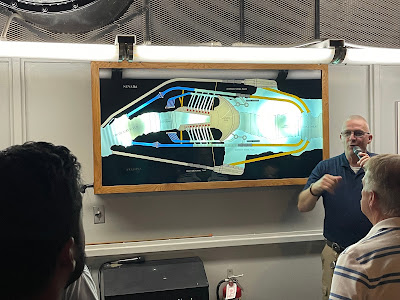
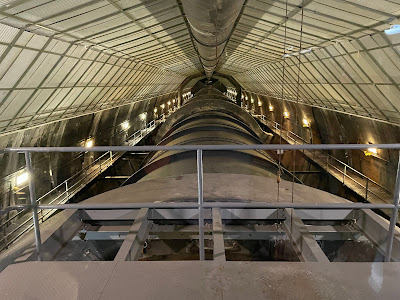

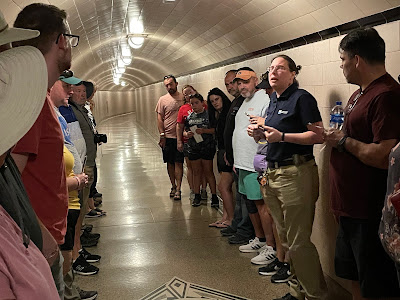



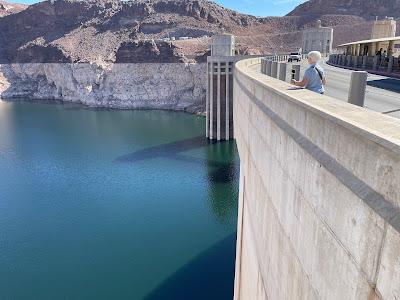

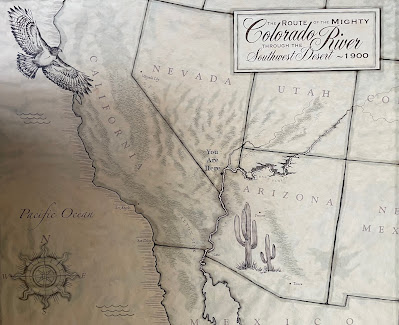


No comments:
Post a Comment